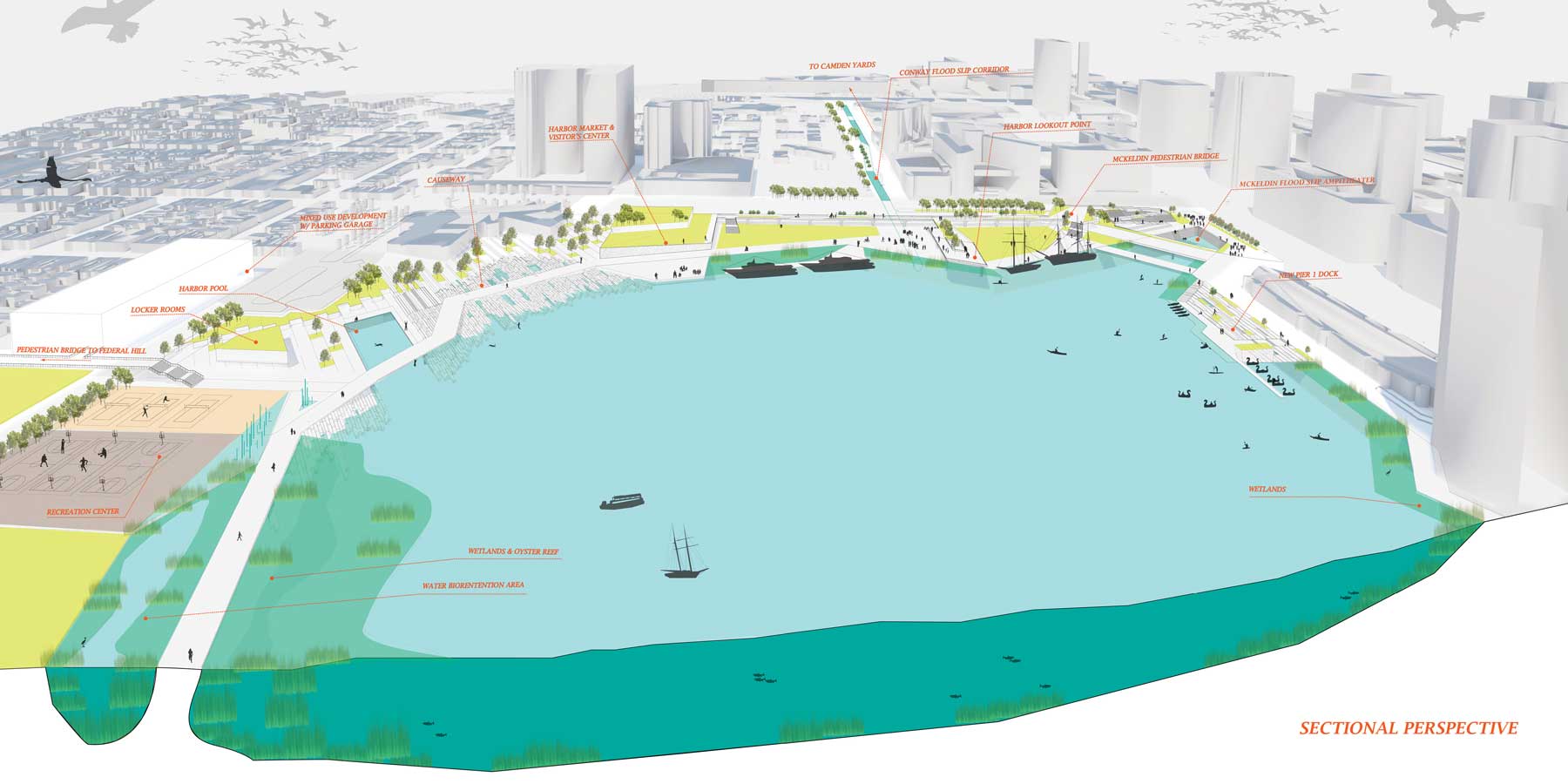“Permeable Futures” – Baltimore Harbor
Permeable Futures is a new harborscape centered on water and experience. Multiple new edge zone conditions foster a variety of interactions with the water, provide sea level rise and flood event resiliency, restore landscape and habitat, and create an urban waterfront park for residents and visitors.
The project considers the history of land reclamation, oyster harvesting, and the industrial and maritime presence of the Baltimore Inner Harbor, studying the changing shoreline and historic piers that stretch into the water.
The project proposes the inverse, allowing the water to stretch into the city and permeate with new slips and retention areas, reclaiming the waterline and creating multiple experiential edge zones with varying water levels. This new oscillating edge is inhabited by water-based recreational activities, a new public food market, new wetlands and oyster reefs, public open green space and a waterfront pedestrian and bike path.
A new corridor from Camden Yards to the Inner Harbor, culminating at a lookout point facing the beloved Domino Sugar sign, establishes a symbiotic relationship between two iconic Baltimore landmarks.
Elevated pedestrian bridges and pathways allow for a layer of use when lower areas are flooded. Managing stormwater and runoff through green roofs, extensive parks, and permeable hardscapes are incorporated throughout the Inner Harbor, in hopes that these “sponge city” elements will spread throughout Baltimore over time.
Featured Press
2019 AIA Baltimore and BAF Spring Lecture Series Design Competition: Edge Harbor and CityProject Credits
Share This!
“Permeable Futures” – Baltimore Harbor
Permeable Futures is a new harborscape centered on water and experience. Multiple new edge zone conditions foster a variety of interactions with the water, provide sea level rise and flood event resiliency, restore landscape and habitat, and create an urban waterfront park for residents and visitors.
The project considers the history of land reclamation, oyster harvesting, and the industrial and maritime presence of the Baltimore Inner Harbor, studying the changing shoreline and historic piers that stretch into the water.
The project proposes the inverse, allowing the water to stretch into the city and permeate with new slips and retention areas, reclaiming the waterline and creating multiple experiential edge zones with varying water levels. This new oscillating edge is inhabited by water-based recreational activities, a new public food market, new wetlands and oyster reefs, public open green space and a waterfront pedestrian and bike path.
A new corridor from Camden Yards to the Inner Harbor, culminating at a lookout point facing the beloved Domino Sugar sign, establishes a symbiotic relationship between two iconic Baltimore landmarks.
Elevated pedestrian bridges and pathways allow for a layer of use when lower areas are flooded. Managing stormwater and runoff through green roofs, extensive parks, and permeable hardscapes are incorporated throughout the Inner Harbor, in hopes that these “sponge city” elements will spread throughout Baltimore over time.





